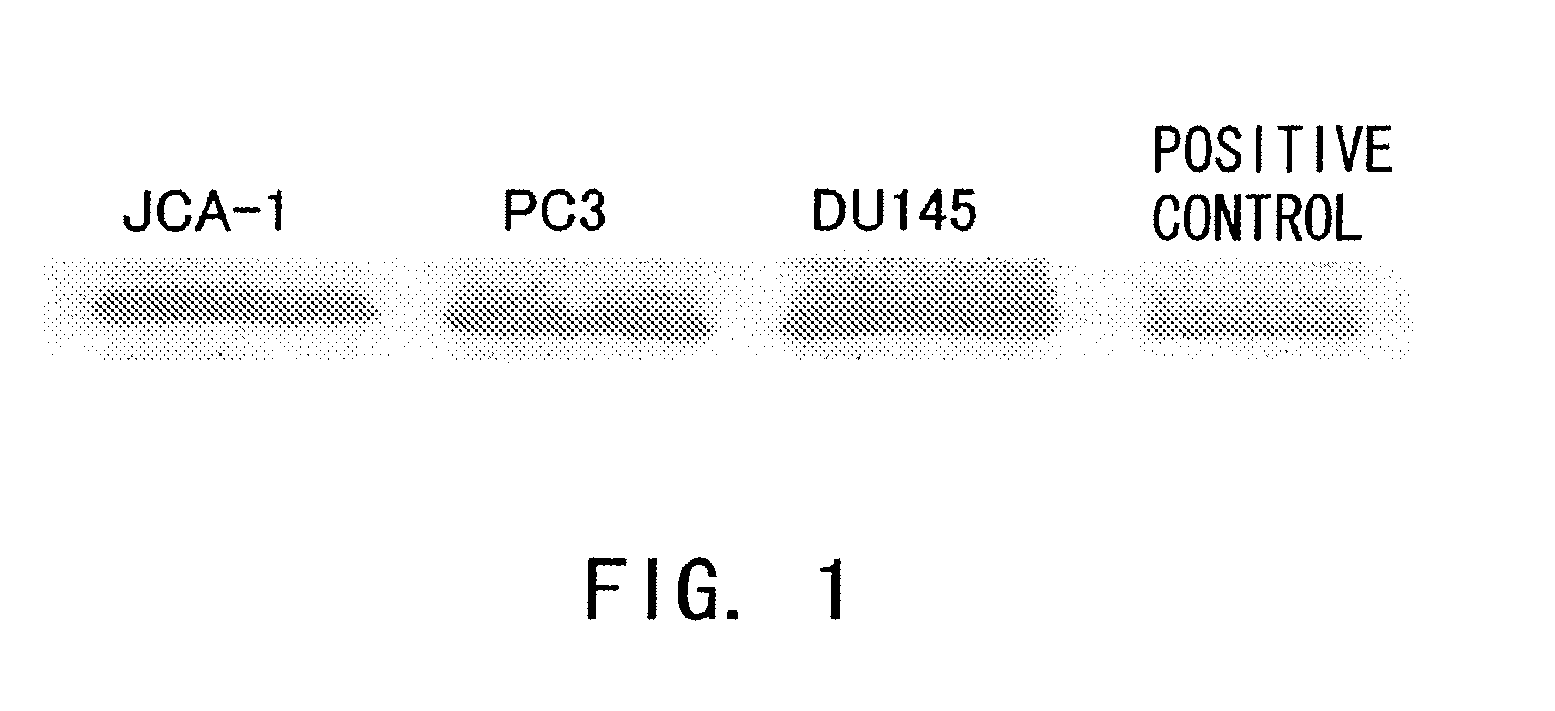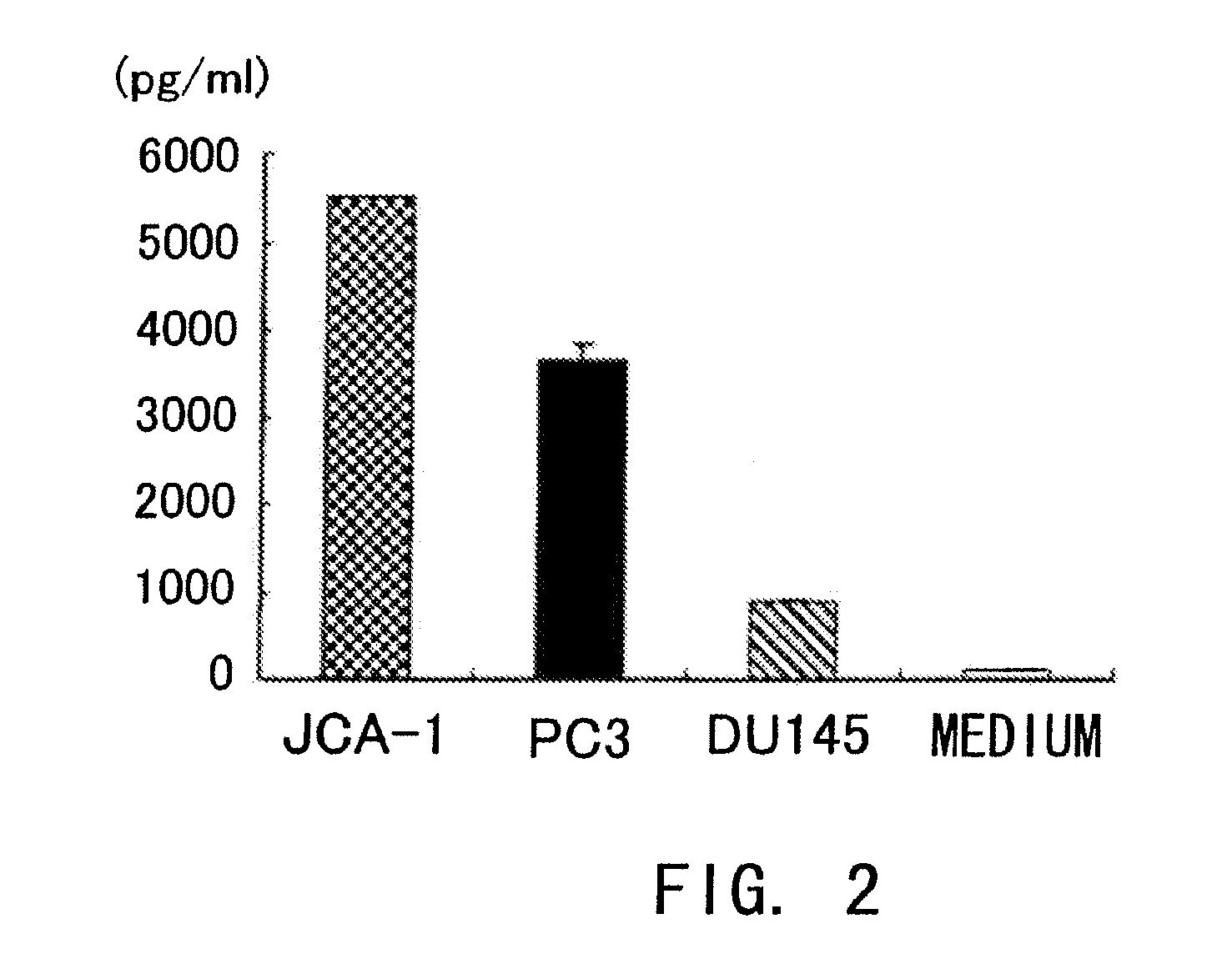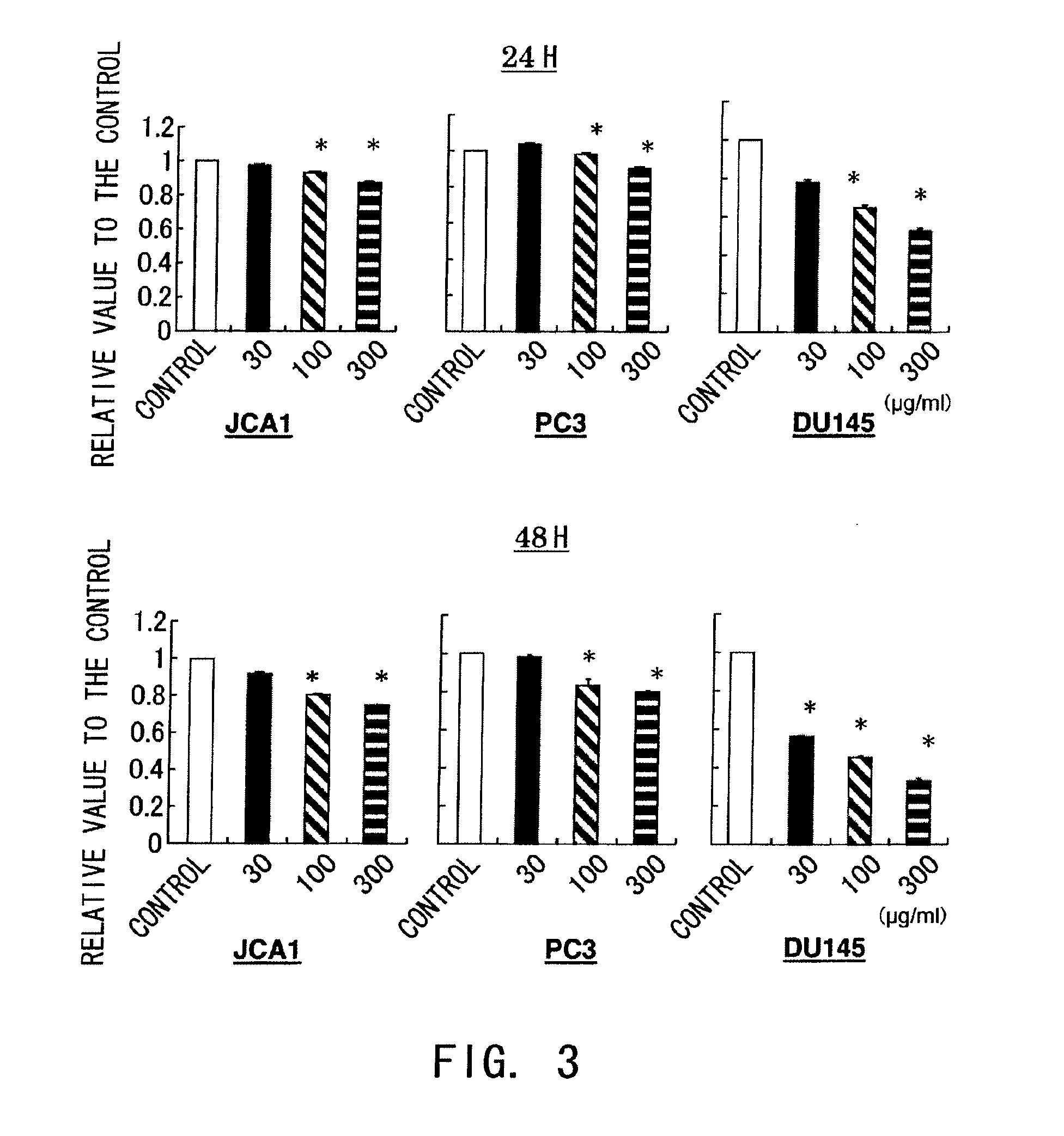Therapeutic agent for prostate cancer
a prostate cancer and agent technology, applied in the field of prostate cancer agents, can solve the problems of unclear whether il-6 inhibitors are effective for treating prostate cancer, prostate cancer growth can be suppressed, etc., and achieve the effect of confirming the in vivo anti-il-6 effect, tumor growth and weight loss, and suppressing the il-6 stimulation-enhanced phosphorylation of stat3
- Summary
- Abstract
- Description
- Claims
- Application Information
AI Technical Summary
Benefits of technology
Problems solved by technology
Method used
Image
Examples
example 1
Confirmation of IL-6 Receptor Expression in Human Prostate Cancer Cell Lines
[0147]Whether human prostate cancer cell lines express IL-6 receptor was examined by Western blotting as described below. The human prostate cancer cell lines used were PC3, DU145, and JCA-1.
[0148]The cell lines described above were cultured in RPMI 1640 medium (Invitrogen, Groningen, The Netherlands) supplemented with 10% fetal bovine serum (FBS) and streptomycin, and then cooled on ice and washed twice with phosphate-buffered saline (PBS). The cells were harvested and lysed with 200 μl of RIPA buffer (20 mM Tris-HCl (pH 7.4), 150 mM NaCl, 2 mM ethylenediaminetetraacetic acid, 1% NP-40, 1% sodium deoxycholate, 0.1% sodium dodecyl sulfate [SDS], 50 mM NaF, 1 mM sodium orthvanadate, 1 mM phenylmethylsulfonyl fluoride, 10 μg / ml aprotinin, and 10 μg / ml leupeptin). The protein concentration of the supernatants was determined by a dye binding method according to the manufacturer's instructions (BioRad Laboratorie...
example 2
Confirmation of IL-6 Production in Human Prostate Cancer Cell Lines
[0150]Whether IL-6 is produced in human prostate cancer cell lines was examined by the methods described below.
[0151]Specifically, the cell lines described in Example 1 were cultured at 5×104 cells / well in 24-well plates for 48 hours using the medium described in Example 1, and the IL-6 concentration in the supernatants was determined by ELISA.
[0152]The result showed that IL-6 was produced in human prostate cancer cells JCA-1, PC3, and DU145 (FIG. 2).
example 3
Confirmation of the in vitro Antitumor effect of hPM1
[0153]Whether hPM1 has an in vitro antitumor effect was examined by the methods described below.
[0154]The cell lines described in Example 1 were cultured at 5×103 cells / well in 96-well plates for 24 hours using RPMI 1640 medium (Invitrogen, Groningen, The Netherlands) supplemented with 5% fetal bovine serum (FBS) and streptomycin, and then, humanized PM-1 antibody (HPM1) was added at concentrations of 30, 100, or 300 μl / ml. After 24 and 48 hours, the antitumor effect was assayed by MTT assay. hPM1 (Hirata T et al., Leuk Res. 2003; 27 (4):343-9, Sato K et al., Cancer Res. 1993; 53 (4):851-6) was provided by Chugai Pharmaceutical Co. Ltd.
[0155]The result showed that hPM1 suppressed cell growth in a time- and concentration-dependent manner (FIG. 3).
PUM
| Property | Measurement | Unit |
|---|---|---|
| pH | aaaaa | aaaaa |
| resistance | aaaaa | aaaaa |
| concentrations | aaaaa | aaaaa |
Abstract
Description
Claims
Application Information
 Login to View More
Login to View More - R&D
- Intellectual Property
- Life Sciences
- Materials
- Tech Scout
- Unparalleled Data Quality
- Higher Quality Content
- 60% Fewer Hallucinations
Browse by: Latest US Patents, China's latest patents, Technical Efficacy Thesaurus, Application Domain, Technology Topic, Popular Technical Reports.
© 2025 PatSnap. All rights reserved.Legal|Privacy policy|Modern Slavery Act Transparency Statement|Sitemap|About US| Contact US: help@patsnap.com



